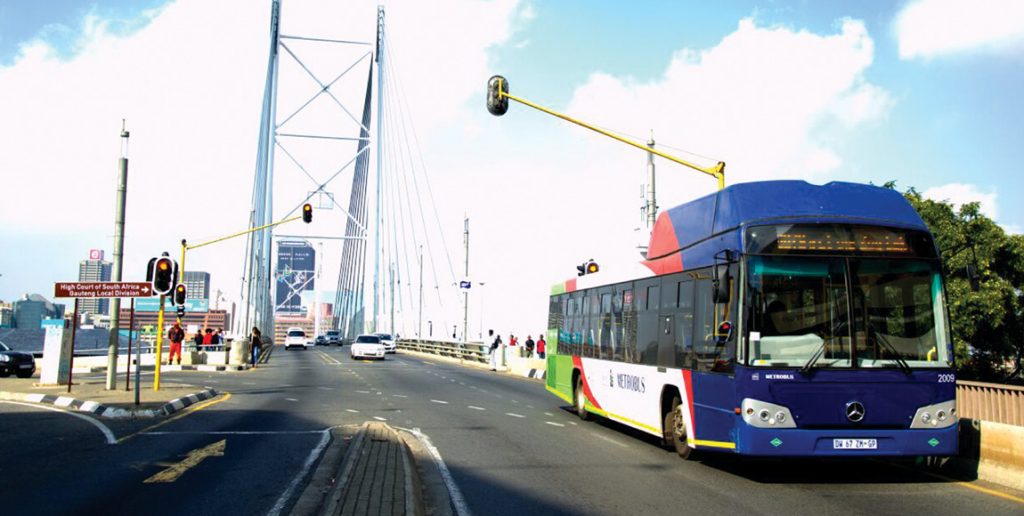Making buses number one

FOCUS finds out about the current challenges faced by the commuter-bus industry
According to Statistics South Africa’s National Household Travel Survey, 10,2 percent of families use buses to get around. Last year was an extremely challenging year for the commuter-bus industry. It was tasked with reconciling balance sheets with the increasing price of diesel, higher passenger expectations, higher wages and ever-increasing operating costs.
At the same time, buses do not have the flexibility to compete with minibus taxis that are able to collect and deliver commuters closer to home or work. Nevertheless, buses offer a more reliable, safer and cleaner means of transport when compared to minibus taxis.
A helping hand?
The commuter-bus industry is currently subsidised through the Public Transport Operations Grant (PTOG). Last year, the increase in this subsidy was only 3,2 percent. This is well below inflation and the government has not yet announced any plans to reassess the structure.
Eric Cornelius, executive manager at the Southern African Bus Operators Association (Saboa), says: “I believe one of the biggest challenges this year will be addressing uncertainties in the contract system, including inadequate funding for public transport.”
Cornelius tells FOCUS that Saboa met with the Minister of Transport, Blade Nzimande, on November 20 last year, to discuss the matter. Nzimande proposed a task team, consisting of representatives from the Department of Transport and Saboa, be set up to come up with workable solutions.
“The task team met on December 4 and, after further discussion, the team decided it would compile a joint presentation with proposed solutions to National Treasury. The presentation is currently being prepared and we hope to have met with National Treasury before the end of January,” says Cornelius.
For a long time the government has recognised the positive impact a better integrated public transportation system will have for citizens. However, according to Cornelius, the government has created an environment where the different industries are dealt with in silos, limiting communication between groups.
Cornelius explains: “In terms of their policies, modal integration should take place, but they are not implementing these policies. We need to understand how the lack of modal integration is affecting passengers. It is not about the modes – it is the passengers who are affected most by the lack of modal integration.”

One-stop service
One cannot discuss modal integration without looking at bus rapid transit (BRT). An article on BizCommunity explains how the City of Cape Town conducted a comprehensive review of the MyCiTi bus service toward the end of last year.
Former Mayoral Committee Member for Urban Development and Transport in the City of Cape Town, Brett Herron, was quoted as saying: “Our transport planners conducted a review of the MyCiTi service and passenger demand on the MyCiTi routes. We also undertook customer surveys to determine how we could attract even more commuters to the service.”
The review identified the need to extend popular routes to the inner city. This led to the establishment of direct routes to Table View, Atlantis and Century City, and 29 new bus stops.
“Adding another 150 000 km to the service each month will bring the MyCiTi service closer to more commuters and to where there is a demand. We expect that the new direct routes to destinations such as the V&A Waterfront and Sea Point will be popular as no transfers will be required.
“The purpose of these changes is to improve the MyCiTi service to make it more convenient for commuters, and easier to use,” said Herron
Before the year ended, the country’s most successful Metro bus service took customer service one step further with the introduction of the MyCiTi map app. The new app makes it easier for commuters to orientate themselves and plan their routes.
“Apart from the MyCiTi routes, the map also shows the different areas and suburbs of Cape Town, as well as the passenger-rail lines and train stations,” said Herron. As such, this innovation may have a positive impact on the government’s quest to provide a more integrated public transport system.
Original equipment manufacturers
Overall, the tough economic climate has left transport operators across the board preoccupied with driving efficiencies. Manufacturers are aware of the challenges faced by the commuter-bus industry and are doing what they can to negate the negative impact of a volatile rand and ever increasing costs.
For example, in December 2017 Mercedes-Benz introduced the OF 1723 bus chassis. Shane Henry, head of department at Mercedes-Benz Bus & Coach, says: “While the Mercedes-Benz OF 1723 is an entry-level product, there is no compromise on quality. This eases the capital outlay burden and makes the bus available to a wider base of operators.”
Henry says that these buses can often perform a role similar to more expensive alternatives at a fraction of the cost. He adds that, when used in the correct application, the lower horsepower engine paired with the OF 1723 chassis has the potential to save fuel.
Trade war
Spokesperson for the Automobile Association (AA) of South Africa, Layton Beard, says that the trade tariffs introduced by United States President Donald Trump may result in changes to international petroleum sales and the strength of the dollar. “Both of these have an impact on the price we pay for
fuel in South Africa, and hence, for the commuter-bus industry and others in the transportation sector,” says Beard.
While AA figures suggest that there has been a stabilisation of the rand and the cost of crude internationally, uncertainty remains about the possible impact of President Trump’s ongoing “trade war”. Therefore, despite the positive figures, it would seem that the possibility of a turn for the worse is still exists.
Let’s hope that is not the ultimate outcome…
Published by
Focus on Transport
focusmagsa




